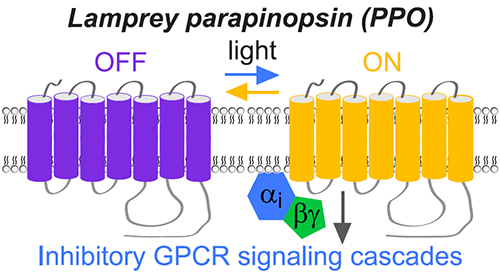Archived Content
The National Institute of Mental Health archives materials that are over 4 years old and no longer being updated. The content on this page is provided for historical reference purposes only and may not reflect current knowledge or information.
Tool Uses Light to Inhibit Neural Activity in Mice
• Research Highlight
Researchers supported by the National Institutes of Health Brain Research Through Advancing Innovative Neurotechnologies® (BRAIN) Initiative have developed a way to genetically insert a type of light receptor into neurons. The new technique enables the researchers to suppress the neuron’s activity using pulses of light. While researchers have previously used light to control the activation of neurons, the ability to inhibit the activity of neurons represents a powerful tool that can be used to better understand the workings of neural circuits in the brain.
There are hundreds of different types of neurons in the brain. To understand how each type of neuron impacts brain function and behavior, it is helpful to selectively influence one neuron type at a time. This type of control helps researchers untangle the functional wiring of the brain and relate specific types of neurons and neuronal circuits to the behavior, sensation, cognition, and emotions of whole organisms.
Optogenetics is a technique used in animal models (and increasingly in humans) that allows researchers to insert a gene for a light receptor into a specific neuron type so that it responds to light. Researchers can then use directed pulses of light to turn the neurons “on” and “off,” impacting the activity of connected neurons. Only the genetically altered neurons are affected by the light pulses, allowing researchers to manipulate the targeted cells while leaving the non-targeted cells alone. While researchers have successfully used optogenetic techniques to promote the activity of neurons, they have had less rapid success finding techniques suitable for inhibiting neurons.

In a study led by Bryan Copits, Ph.D. , of the University of Washington School of Medicine, St. Louis, and Michael Bruchas, Ph.D. , of the University of Washington, Seattle, researchers developed a tool that can precisely control and inhibit individual neurons. To accomplish this, the researchers used a protein called parapinopsin (PPO) that is found in lampreys, a type of jawless fish. PPO is light-sensitive, and the action of this protein can be switched on when illuminated with ultraviolet light and off when illuminated with green/amber light. PPO is able to interact with parts of the neuron that inhibit neuronal activity, allowing researchers to use targeted light to turn on and off inhibitory signaling in individual neurons with exquisite accuracy.

The research team tested this new optogenetic tool in mice, using both electrophysiological recording of neurons and behavioral observation of animals as measures of the tool’s effect. The findings showed that light-based activation of PPO in the midbrain dopamine neurons of mice effectively inhibited the firing of those neurons. Light-based activation of PPO also decreased reward-seeking behaviors in mice that had been trained to associate a light cue with access to a sugar solution.
One of the values of this tool is that it gives researchers the ability to precisely program sequences of neuronal action, using patterns of light to suppress a neuron and then disengage that suppression. This precise control is useful to researchers because the timing of neuronal activity is important in how brain circuits function to control behavior.
The findings of this recent study suggest the use of PPO to control and inhibit neurons is an exciting technological advance that can help researchers better understand the intricacies of neural and brain circuit control and action.
Researchers who would like to know more about this tool may contact Dr. Bryan Copits (bcopits@wustl.edu) and Dr. Michael Bruchas (mbruchas@uw.edu) for more information.
Reference:
Copits, B. A., Gowrishankar, R., O'Neill, P. R., Li, J. N., Girven, K. S., Yoo, J. J., Meshik, X., Parker, K. E., Spangler, S. M., Elerding, A. J., Brown, B. J., Shirley, S. E., Ma, K., Vasquez, A. M., Stander, M. C., Kalyanaraman, V., Vogt, S. K., Samineni, V. K., Patriarchi, T., Tian, L., … Bruchas, M. R. (2021). A photoswitchable GPCR-based opsin for presynaptic inhibition. Neuron, 109(11), 1791–1809.e11. https://doi.org/10.1016/j.neuron.2021.04.026
